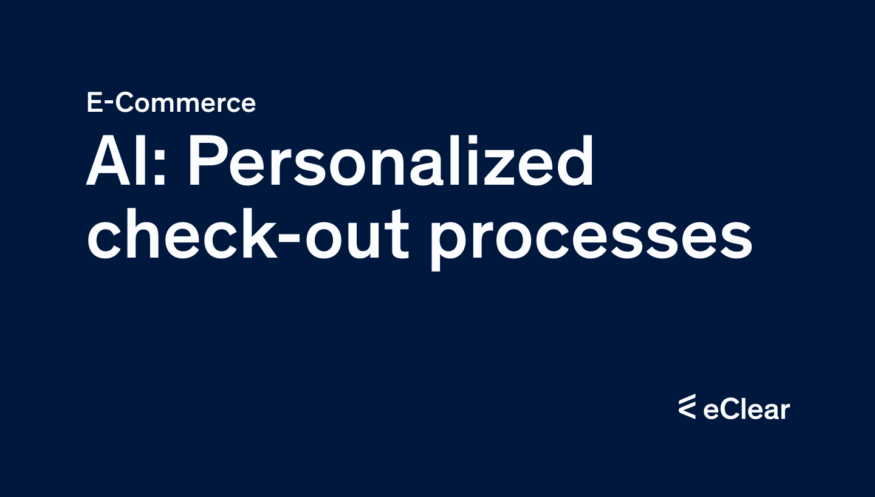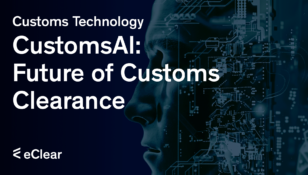E-commerce has developed rapidly recently, with artificial intelligence (AI) playing a crucial role. In figures, it reads something like this: For 2022, B2C e-commerce sales in Germany alone amounted to an impressive 84.5 billion euros. Although turnover fell by 2.5 per cent compared to the previous year, it is still high.
Growth has been rapid lately and further fuelled by pandemic-related retail closures. For comparison: in 2015, B2C e-commerce sales in Germany were still below 40 billion euros!
And even if economic downturns temporarily cause a decline in e-commerce sales, it can be assumed that the Eurozone, which has slipped into recession, will soon recover significantly – apart from possible and unforeseeable dangers from higher forces.

But not only are the figures promising, apart from economic fluctuations. The way e-commerce is also developing shows rapid changes, especially about the customer experience – one more reason why retailers, especially platforms, are constantly optimising the customer journey and, in addition to an often-intuitive user experience (UX), making the check-out process as smooth as possible – the shopping experience should thus once again be positively charged, and yes, of course, one hopes for further purchases. After all, people like to fall back on services that have been stored as pleasant. Keyword: neuromarketing. What is behind this term? It’s about investigating how choice and purchase decisions are made in the human brain, and very importantly for advertising: how to influence them, and very importantly, how to activate the supposedly magic ‘buy button’ in the individual:

Customers’ purchasing decisions are often guided by emotions that run unconsciously. Customers rely on positive experiences and associate positive feelings with certain products and brands in habitual purchases. On the other hand, spontaneous purchases happen more impulsively, for example, through special offers or targeted advertising messages. The brain plays a vital role in this, as it constantly unconsciously investigates how to fulfil needs and thus influences buying behaviour. The concept of neuromarketing aims to understand human brain activity better and to use this knowledge in a targeted way to steer purchasing decisions in a specific direction. This allows companies to understand consumers better and optimise the effect of brands, communication, and products on them. This is a brief digression regarding neuromarketing. But how can companies use these insights for themselves, especially about check-out solutions in e-commerce?
Best Practice Example 1: Virtual assistants in the check-out
A successful example of using AI in check-out is the integration of virtual assistants. These intelligent chatbots assist customers during check-out and offer them personalised support. Through machine learning, virtual assistants can analyse customers’ preferences and needs and provide suitable recommendations. They can also answer questions, eliminate ambiguities and help customers select the right products. This makes the check-out process more efficient, pleasant, and customer-oriented. But who or what exactly is behind the term Virtual Assistants?
Virtual assistants, called chatbots, are AI-based programs enabling human-like customer interactions. At the check-out, they can take over various tasks to support customers and provide a smooth shopping experience.
A key advantage of virtual assistants in the check-out is their round-the-clock availability. Customers can ask questions, get help and receive assistance with entering information such as shipping and payment details, regardless of the time of day. This improves customer satisfaction and reduces potential frustrations during the check-out process.
In addition, virtual assistants can offer personalised recommendations based on the customer’s preferences and buying behaviour. They can provide tailored product suggestions and provide relevant information by analysing customer data. This helps support the customer’s purchase decision and maximise cross-selling potential.
Another important aspect is increasing efficiency. Virtual assistants can help customers enter information, answer frequently asked questions, and speed up check-out. This leads to a higher conversion rate and smooth completion of the purchase.
In addition to providing support during check-out, virtual assistants can continue to be helpful after the purchase. They can send order confirmations, update the shipping status and contact customer service in case of questions or problems. This creates a holistic customer experience.

Best Practice Example 2: Dynamic pricing
Another notable example of the use of AI in check-out is dynamic pricing. By using algorithms and machine learning, online retailers can adjust the prices of their products in real-time. This enables personalised pricing, where prices are tailored to the individual customer. Based on customer behaviour, demand and other factors, AI technology can determine optimal prices that are attractive to the customer while remaining profitable for the retailer. This personalised pricing increases the likelihood of purchase and improves customer satisfaction.

But how exactly does dynamic pricing work?
Dynamic pricing is based on the idea that prices can vary according to supply and demand, customer segments, seasonal trends or individual customer characteristics. Instead of offering rigid prices, prices are continuously adjusted to achieve the optimal balance between profit maximisation and customer satisfaction. Almost everyone has searched for airline tickets online and found that the price has changed, unfortunately, usually upwards.
An essential advantage of dynamic pricing is the ability to use real-time data. Companies can analyse data on customer behaviour, competitive prices and market trends to adjust their prices. Using algorithms and artificial intelligence, they can identify patterns and trends and derive appropriate pricing strategies.
Dynamic pricing also allows companies to optimise their profit margins. By analysing the demand and value of a product, they can adjust prices accordingly. In times of high need, prices can be raised, while in times of low demand, attractive offers can be made to boost sales.
In addition, dynamic pricing offers the possibility to consider individual customer characteristics. Companies can analyse customer profiles and provide personalised prices. This enables a targeted approach and strengthens customer loyalty.
However, there are also challenges in implementing dynamic pricing. Transparent communication with customers is crucial to maintain trust and avoid price discrimination. In addition, companies need to ensure that pricing complies with legal and ethical guidelines.
Overall, dynamic pricing is a smart strategy to increase sales in e-commerce. Companies can optimise prices and maximise customer satisfaction using real-time data, algorithms, and personalised approaches. However, planning the implementation carefully and considering legal aspects to ensure long-term success is essential. With effective dynamic pricing, companies can strengthen their competitiveness and sustainably increase their sales.
Conclusion:
A personalised check-out experience in e-commerce offers many advantages for businesses and customers. By analysing customer behaviour using AI algorithms, companies can provide personalised recommendations and tailored offers during check-out. This leads to an interactive and personalised check-out process that can increase conversion rates. Chatbots or virtual assistants can support customers during check-out and provide individual product recommendations based on the customer’s preferences. AI also enables dynamic price adjustments in real-time to offer personalised discounts or upselling offers. This will optimise the check-out process and improve customers’ buying experience.
It remains exciting where further development is heading. Still, the personalised check-out experience is essential for retailers to enter into long-term and sustainable customer relationships and thus further expand success in e-commerce.







